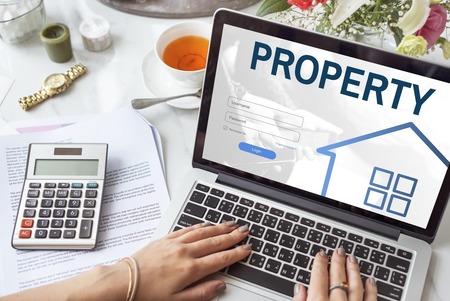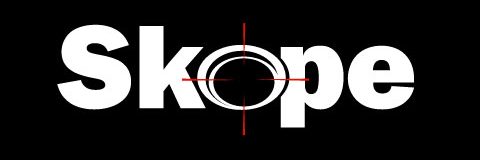
For any serious real estate investor, moving past spreadsheets and shoeboxes full of receipts is the first step to creating a solid business and building wealth. Professional property management means professional-grade financial tracking. That’s where an application like QuickBooks really comes into play. While it’s not necessarily designed specifically for landlords, its powerful platform will be expertly customized to focus on the unique financial flows of rental properties. If you’ve found yourself wondering if you need quickBooks for rental property, this step-by-step guide will walk you through the setup, daily use, and strategic benefits of using this platform to help take your real estate finances under control.
Why You Might Need QuickBooks for Your Rental Property
At its core, a rental property is a business. It needs income, operating expenses, capital expenditures and tax obligations. As you build out your portfolio of properties it can become extremely overwhelming to have to track all these items in a silo. Not only do you end up missing deductions, being unsure of cash Baselane, and making costly mistakes at tax time. QuickBooks will help you solve these problems. You can automate the tracking of all your transactions, categorize your expenses to produce a clear profit-and-loss report, and provide you with financial statements that give you an up-to-date view of the condition of your portfolio. The best part is that you don’t just crunch numbers. You now have the business intelligence you need to make decisions about your rent rates, your maintenance budget, and future investments.
Creating Your Chart of Accounts for Landlords
The Chart of Accounts is the list of categories you assign to your income and expenses. You can add everything in QB with a standard chart, but for rental real estate you will want something specific tailored to your needs. For your income, you will want Rental Income”. You can create sub-accounts under this area for different streams of income e. g. “Rental Income Late Fee or “Rental Income – Laundry” for example, but you can keep it simple with one main account on the expense side. You also want to create the accounts that would be used for all the quickbooks for rental property deductions for the IRS Schedule E form. Key accounts include: Once you create every expense in these separate accounts, you are not forced to go through years of transactions to sort it all out.
Tracking Every Expense from Repairs to Mortgage Interest
Careful expense recording is where QB really pays off. Every time you pay a repair or utility bill or for your mortgage, you have to record it in the system. If the expenses are paid from your business checking account, then you can use the Write Check or Expense function. You can use the Enter Credit Card Charge function to make Credit Card purchases. At the time of each transaction, you will enter the payee, the date of payment, the amount of the payment and the much-important account and class. You pay $300 to a plumber to fix a leak at 123 Main Street. You would write a check in QB, category the $300 into Repairs, assign the class 123 Main Street. You pay $1200 monthly for mortgage payments on 456 Oak Avenue. Of the $1200 you pay mortgage interest, $1, 000 goes to Mortgage Interest and $200 goes to Loan Principal which isn’t an expense by any means it’s a balance sheet transfer. You would assign the class Oak Avenue to the entire transaction. This method, property by property, builds a perfect, audit-ready ledger throughout the year.
Reconciling Your Accounts the Key to Accuracy
Bank Reconciliation is a necessary part of running a business. You’ll need to reconcile each month between the transactions in your QuickBooks account for checking and credit cards and your actual bank and credit card statements. The point is to make sure that each transaction matches up, so that the business knows that your books are accurate and complete. Yes, there’s an integrated Bank Reconciling Tool in QuickBooks that does all the work for you. By marking each transaction as it clears the bank you can catch errors, duplicate entries or even missing transactions, so that your financial information is trustworthy.
Generating Powerful Reports for Landlords
Data is useless if you don’t have any idea what it is. QuickBooks makes money on the ability to turn raw transaction data into useful reports. Once your data is entered correctly with classes you can make reports that tell you all about your business. The most important one for a landlord is the Profit and Loss by Class report. This report will show you in one consolidated view, the total income, total expenses and net profit or loss for each of your properties over whatever period you choose. This will give you an instant ‘look’ of which properties are doing well and which are cash wasters. Other great reports to have include the Balance Sheet to see your overall net worth and the Statement of Cash Flows to help you see how much cash flows in and out of your business.
Enhancing Your QuickBooks Ecosystem
As a landlord, you probably want to stay as efficient as possible so you can really enjoy the power of QuickBooks. But it doesn’t have to be that simple. Adding it to the platform gives you a wealth of specialized banking and financial tools to add to your QuickBooks file, enabling you to create clean, pre categorized data to feed right into your accounting system. You could set up a situation where your tenants pay rent from your rental banking account. Your tenant payments then quickbooks for rental property label your baselane deposit and invoice with the correct property class, and send these details straight to your QuickBooks files automatically. Perhaps your expenses are paid on a card. When you get to the end of the invoice or pay them electronically, create a log, automatically logging the expense in Baselane.
Conclusion
Adopting QuickBooks to track payments and expenses for your rentals is an investment in your own success. While there is a learning curve here and a significant initial outlay in getting the file set up especially if you’re trying to make sure it looks good on your taxes the long-term benefits are substantial: easier tax preparation, better insight into each property’s profitability, and the confidence that comes from knowing everything is in place for you. Utilizing classes, customizing your chart of accounts, and logging transactions accurately turns your rental operation from a side hustle into an end to end business. And by exploring the integrations that allow you to automate data flow, you can unleash the full potential of your efficiency and free up your time to focus on what really matters growing your real estate portfolio.
